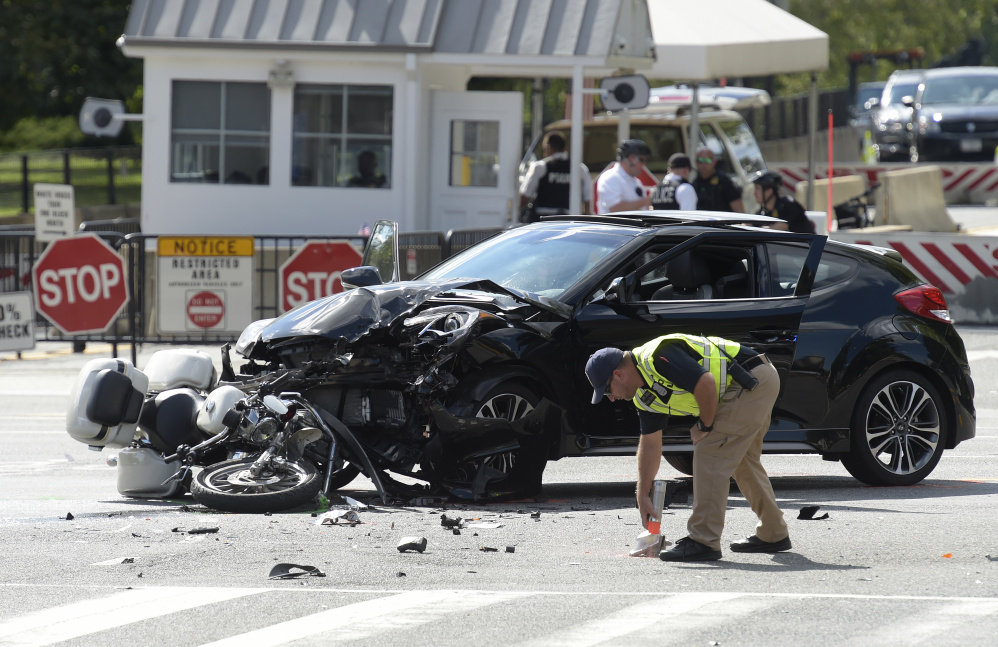Nearly 18,000 people died, up 10% from a year ago, as safety officials form a coalition to cut fatalities.
WASHINGTON — Nearly 18,000 people died on U.S. roads in the first six months of this year, an increase of more than 10 percent over the same period in 2015, according to new estimates released Wednesday by the National Highway Traffic Safety Administration.
As the effect of the Great Recession has waned, putting millions more Americans back to work, the number of people dying on the roads has increased steadily since late 2014. The Federal Highway Administration said drivers traveled about 50.5 billion miles more from January through June this year than they did last year.
If the trend continues through the balance of the year, 2016 will see the largest percentage increase in traffic fatalities since the 1960s.
The data was released Wednesday as the U.S. Department of Transportation created a coalition of safety groups to develop a 30-year plan to reduce road fatalities. The goal is fashioned after an effort approved by the Swedish parliament in 1997 that reduced fatalities from seven per 100,000 to fewer than three in less than 15 years.
The coalition will try to reduce road deaths to zero over the next three decades, a target that may benefit from the advent of driverless cars. Safety advocates cite data showing 94 percent of fatalities result from driver choice or error, so an era without drivers could dramatically reduce death and injury – although autonomous car developers do not promise a crash-free world.
“There is absolute value in bringing together a wide range of stakeholders,” said Deborah A.P. Hersman, former chairman of the National Transportation Safety Board and now president of the National Safety Council. “It’s going to take all of us to solve this problem.”
The initial targets for what was named the Road to Zero Coalition were familiar: increasing seat belt use, installing rumble strips, continuing behavior-change efforts and providing law enforcement with data to make them more effective.
“We’re making a lot of progress with seat belts, a lot of progress on drunk driving,” said Jonathan Adkins, executive director of the Governors Highway Safety Association, which has enlisted in the effort. “It can’t just be belts and booze. We have to talk about distracted driving. We have to talk about drowsy driving.”
Adkins also said safety efforts were hindered by the transportation legislation passed by Congress last year. The bill required that all highway safety improvement funds be spent on infrastructure.
“That’s going to mean a big cut in behavioral highway safety funding,” he said, “and that’s coming at the worst time as highway fatalities are up.”
Another factor helping to push the death numbers higher is an increase in speed limits in recent years, according to a recent report by the Insurance Institute for Highway Safety. The institute said that in 2013 alone, higher speed limits resulted in 1,900 additional deaths.
The big jump in 2015 deaths came in four states – Montana, Idaho, Oregon and Washington – where fatalities increased by 20 percent. The next-largest increase – 10 percent – was in the six New England states. After that, one of the biggest regional increases, 9 percent, came in a grouping of mid-Atlantic states to which NHTSA appended Kentucky.
The only decline – 1 percent – in fatalities came in a group comprising Texas, New Mexico, Oklahoma, Mississippi and Louisiana. There was no immediate explanation for the regional disparities.
The most reliable data on roadway fatalities for 2016 will not emerge until next fall, as NHTSA continues to collect and revise information provided by state and local police.
The number of people killed last year – 35,092 – was a 7.2 percent increase over 2014 and the largest percentage increase in nearly 50 years. From 1965 to 1966, the number of deaths increased by 8.1 percent.
The estimated number of people injured in crashes last year rose from 2.34 million to 2.44 million.
From 2014 to 2015, fatalities increased in almost all categories, including passengers in cars and trucks, pedestrians, bicyclists and motorcyclists, and alcohol-involved crashes.
Deaths in cars and light trucks were the highest since 2009. SUV deaths were up 10 percent in 2015, and van occupant deaths rose about 9 percent. Car occupant fatalities increased 6 percent.
Motorcycle deaths increased 8 percent from 2014, and pedestrian fatalities were up 9.5 percent.
Bicycle fatalities increased by 89, up just over 12 percent, to reach their highest level since 1995. And alcohol-impaired driving deaths increased slightly more than 3 percent, from 9,943 in 2014 to 10,265 in 2015.
Send questions/comments to the editors.



Success. Please wait for the page to reload. If the page does not reload within 5 seconds, please refresh the page.
Enter your email and password to access comments.
Hi, to comment on stories you must . This profile is in addition to your subscription and website login.
Already have a commenting profile? .
Invalid username/password.
Please check your email to confirm and complete your registration.
Only subscribers are eligible to post comments. Please subscribe or login first for digital access. Here’s why.
Use the form below to reset your password. When you've submitted your account email, we will send an email with a reset code.